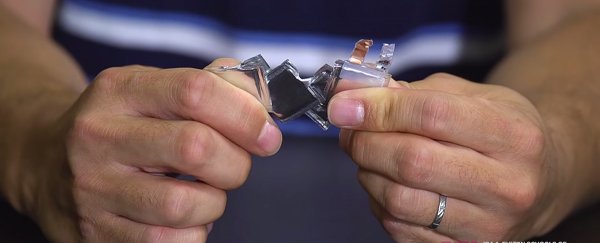If you own a smartwatch - or indeed a smartphone - then you'll know that battery performance on modern-day gadgets isn't quite what it could be. With these devices so central to our daily lives, scientists from all over the world are working on smaller, better-performing batteries, and a team of engineers from Arizona State University in the US and Jinan University in China is the latest to show off their progress.
The innovation here isn't so much the material used in the batteries - it's the same lithium-ion compound that makes up the smartphone batteries of today - but the way in which it's put together. Based on origami and kirigami (where paper is cut as well as folded), this new battery style can be extended and retracted like a car antenna, even while it's powering a device.
That means the stretchable battery can go places where normal batteries can't go, like the band of your smartwatch or inside a very thin section of a robot. The batteries that the researchers have created can stretch and expand to more than 150 percent of their compacted size, and that's a big deal in an industry where electronics are becoming more versatile and wearable.
You can see the batteries in action below:

As there are so many advantages to this kind of flexibility, scientists have spent many years trying to work on batteries that can be folded in this way, but packs created from previous attempts at the technology would often break or tear when folded. The batteries produced by the team from the US and China overcome this problem by placing carefully calculated soft creases at various points along the battery's body.
The inventors say that these batteries could double the life of a smartwatch between charges, for example, by being fitted into the band. What's more, the manufacturing process is reasonably straightforward. There is a tradeoff though - the shape of these batteries means they can't hold as much charge as a comparable rectangular one.
"When you ask a battery to be flexible like this, you give up some of the energy you can store in a given volume. But if you're a designer trying to make the thinnest watch face possible, who knows? The aesthetics might make that tradeoff worth it," Princeton University energy storage engineer Daniel Steingart, who wasn't involved in this particular research, told Popular Mechanics.
It won't break any records for battery life, then, but it could add some invaluable extra power where normal batteries are unable to go - and that means these new kirigami batteries have a lot of potential for the years to come.
The device has been described in the journal Scientific Reports.
